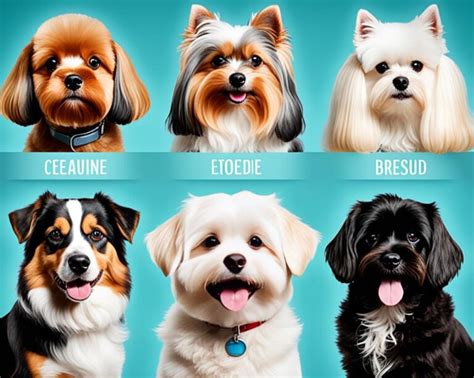Introduction
Grooming plays a vital role in maintaining a dog’s health, hygiene, and overall well-being. However, different dog breeds have unique coat types and grooming requirements that must be met to ensure their comfort and appearance. This comprehensive guide will explore the breed-specific grooming needs of various dog breeds and provide tips and recommendations for maintaining their coats in optimal condition.

Understanding the Importance of Breed-Specific Grooming
- Health: Proper grooming helps remove dirt, debris, and loose hair from the coat, preventing skin irritation, matting, and other dermatological issues.
- Hygiene: Regular grooming reduces the risk of bacterial and fungal infections, promotes hygiene, and eliminates odors.
- Appearance: A well-groomed coat enhances the dog’s appearance, making it feel good about itself and leaving a lasting impression on others.
Grooming Needs by Coat Type
1. Short-Haired Breeds
- Frequency: Weekly to bi-weekly brushing
- Tools: Slicker brush, rubber grooming mitt
- Tips: Avoid over-bathing as it can strip the skin of natural oils.
2. Medium-Haired Breeds
- Frequency: Weekly to bi-weekly brushing
- Tools: Pin brush, slicker brush, undercoat rake
- Tips: Brush regularly to prevent matting, especially during shedding seasons.
3. Long-Haired Breeds
- Frequency: Daily to weekly brushing
- Tools: Wide-toothed comb, slicker brush, undercoat rake
- Tips: Pay attention to areas prone to tangles, such as behind the ears and under the belly.
4. Wire-Haired Breeds
- Frequency: Stripping every 4-6 weeks
- Tools: Stripping knife, stripping comb
- Tips: Consult a professional groomer for proper stripping techniques to avoid damaging the coat.
5. Curly-Haired Breeds
- Frequency: Weekly to bi-weekly brushing
- Tools: Wide-toothed comb, detangling spray
- Tips: Avoid using brushes as they can break the curls.
Additional Grooming Considerations
1. Bathing:
- Frequency varies by breed and coat type.
- Use a dog-specific shampoo and avoid over-bathing.
- Rinse thoroughly to remove all soap residue.
- Towel dry and use a hair dryer on a low setting to prevent hot spots.
2. Nail Trimming:
- Trim nails regularly using dog nail clippers.
- Hold the paw firmly and trim the tips of the nails, avoiding the quick.
3. Ear Cleaning:
- Check ears regularly for wax buildup or infection.
- Use a pet-safe ear cleaner and follow instructions.
- Avoid using cotton swabs as they can damage the ear canal.
Breed-Specific Grooming Guide
| Breed | Coat Type | Grooming Frequency | Tools |
|---|---|---|---|
| Poodle | Curly | Weekly to bi-weekly | Wide-toothed comb, detangling spray |
| Golden Retriever | Medium | Weekly to bi-weekly | Pin brush, slicker brush, undercoat rake |
| Labrador Retriever | Short | Weekly to bi-weekly | Slicker brush, rubber grooming mitt |
| Yorkshire Terrier | Long | Daily to weekly | Wide-toothed comb, slicker brush, undercoat rake |
| Shetland Sheepdog | Double | Weekly to bi-weekly | Pin brush, slicker brush, undercoat rake |
| Afghan Hound | Long | Daily to weekly | Wide-toothed comb, slicker brush, undercoat rake |
| Schnauzer | Wire | Stripping every 4-6 weeks | Stripping knife, stripping comb |
| Bichon Frise | Curly | Weekly to bi-weekly | Wide-toothed comb, detangling spray |
| Maltese | Long | Daily to weekly | Wide-toothed comb, slicker brush, undercoat rake |
| Beagle | Short | Weekly to bi-weekly | Slicker brush, rubber grooming mitt |
| Rottweiler | Short | Weekly to bi-weekly | Slicker brush, rubber grooming mitt |
| German Shepherd | Double | Weekly to bi-weekly | Pin brush, slicker brush, undercoat rake |
Conclusion
By understanding the breed-specific grooming needs of your furry companion, you can create a tailored grooming routine that ensures their health, hygiene, and overall well-being. Regular grooming promotes a stunning appearance, prevents health issues, and strengthens the bond between you and your beloved pet. Remember to consult a professional groomer for advice and guidance on specialized grooming techniques.





















